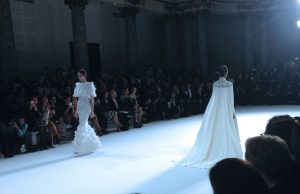Insights & Perspectives
Luxury Brands and the Variables of Valuation

In the context of mergers and acquisitions, valuations of luxury brands—and most especially of luxury fashion brands—take into considerable account intangible assets such as brand value and creative leadership. A sector of business estimated by Bain consultants to be worth €249bn globally, it is one that is also sensitive to trends and the variable strength of brand communications.
Price negotiations during a part or full ownership sale of a major luxury brand can quickly mount to reach prices beyond expectations—not far from the ambiance at the bidding of a Hermes Birkin bag at Christie’s auction, the latest record of which reached $117,000 on December 17, 2017.
While any brand’s tangible assets such as manufacturing, real estate and financial assets are the main source of business value, intangible assets are another important source of value creation. They can be responsible for a notable gap between a company’s market value and its accounting value, fetching 15-18 times the EBITDA (earnings before interest, tax, depreciation and amortization); luxury company valuations were up as much as 20 to 25 per cent in the early part of 2017.
Foreign Buyer Competition
A factor contributing to high-priced takeover deals, as witnessed in the past five to ten years, is the general scarcity of sellers—especially in Italy where brands often remain family-run businesses—combined with a growing number of buyers from Asia and the Middle East wishing to acquire European brands with strong heritage. Companies include China’s Fung Group, Fosun and the Qatar Luxury Group and Qatari investor Mayhoola, which bought Italian fashion label Valentino in 2012 at 20 times current-year EBITDA.
The Consideration of Creative Leadership
Beyond desirability in foreign markets, another key contributor to high valuation is when a brand is built around a particular craftsmanship skill, a lifestyle vision or distinctive design identity spearheaded by top creative management.
While strong management is a critical element to consider when reviewing any company profile, high-level creative management has its own importance in fashion and luxury brands. In addition to unifying and jump-starting desirable brand perception in consumers, in fashion brands particularly, a media-savvy figurehead such as a star designer or creative director can prove highly profitable.
Examples in Luxury Fashion Brands
One of the classic examples of this form of leadership is the rise of Tom Ford at Gucci in the early 1990s, in which his presence and persona drove highly profitable results for the Italian brand. Ford and business partner Domenico de Sole represented a classic creative management combination with the pairing of a creative director with a chief executive, both driving strategic decisions. The historical coupling of Pierre Bergé and Yves Saint Laurent is another example, of which there are many. More recently, the example of Christopher Bailey at Burberry, sees both roles—president and chief creative officer—given to one management role, which attests to the perhaps increasing power that creative leadership holds for a luxury brand’s success.
Investing in a star designer can require significant capital expenditure as well as risk. In 2014, just three years after Hedi Slimane became creative director of Yves Saint Laurent (changing its name to Saint Laurent), the business drove €707 million in sales revenue for parent company Kering, up 27 percent on 2013. Slimane also insisted on maintaining his design studio in Los Angeles, far from company headquarters in Paris, as well as changing the team around him. Brands are also often obliged to express a designer’s vision for the brand across all platforms, including boutique renovations that, in the case for Gucci with the arrival of Alessandro Michele, were estimated to cost between between €650 million and €850 million, or 10 to 20 percent of total revenues. Such figureheads can also be costly in terms of reputation if, for example, the fit between designer and brand is not a good one and the collaboration proves to be unsuccessful or short-lived.
A strong brand and its creative leaders are able to define an ideology and express a certain social statement in a visually and tactile way that goes far beyond tangible assets. This is an element in company valuations that can prove to be at once both high return and high risk.
SOURCES: Financial Times; The Business of Fashion; Reuters; Brand Finance.
